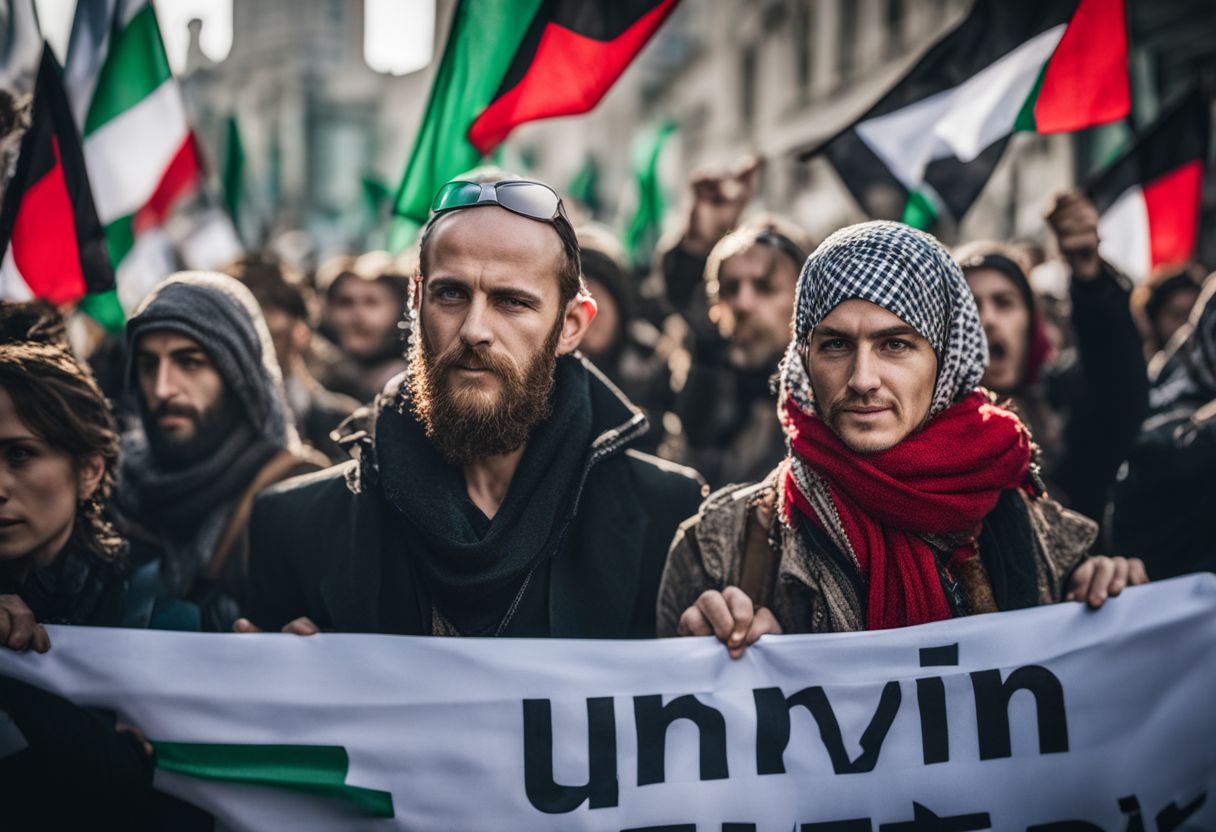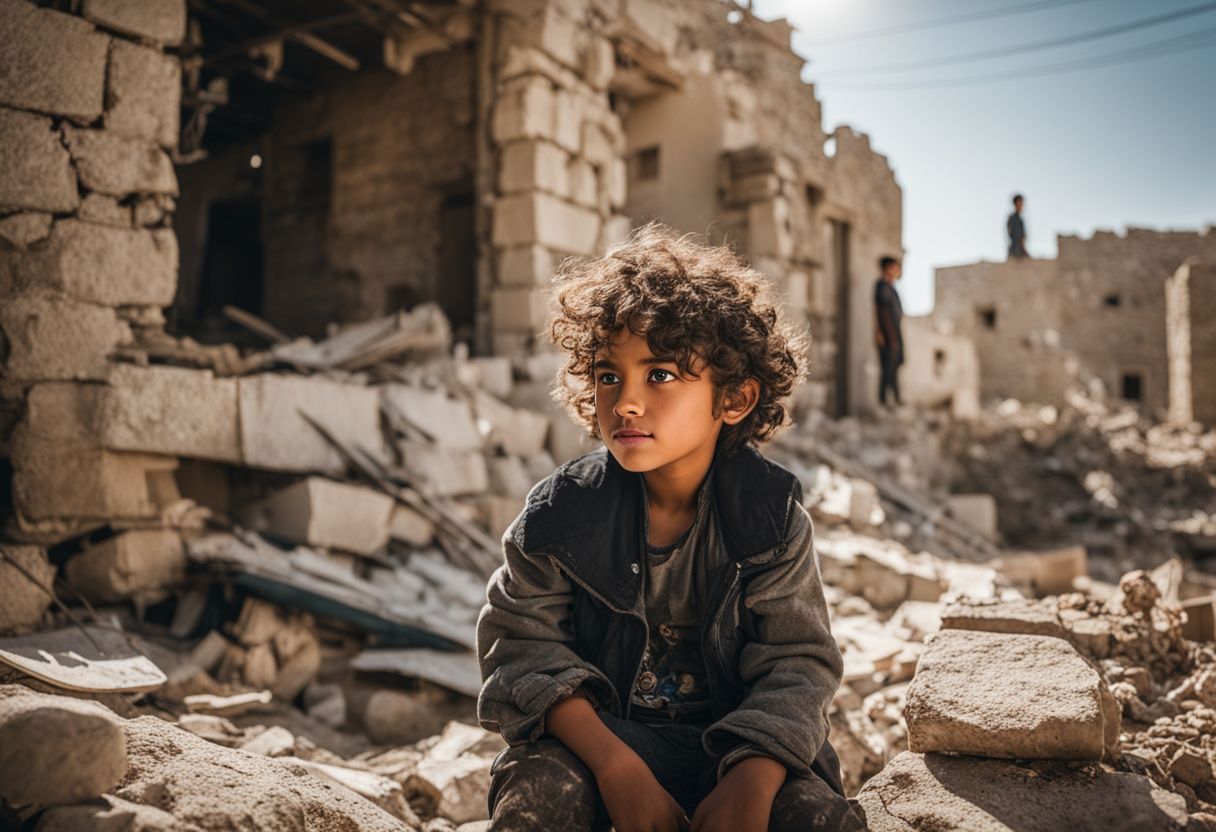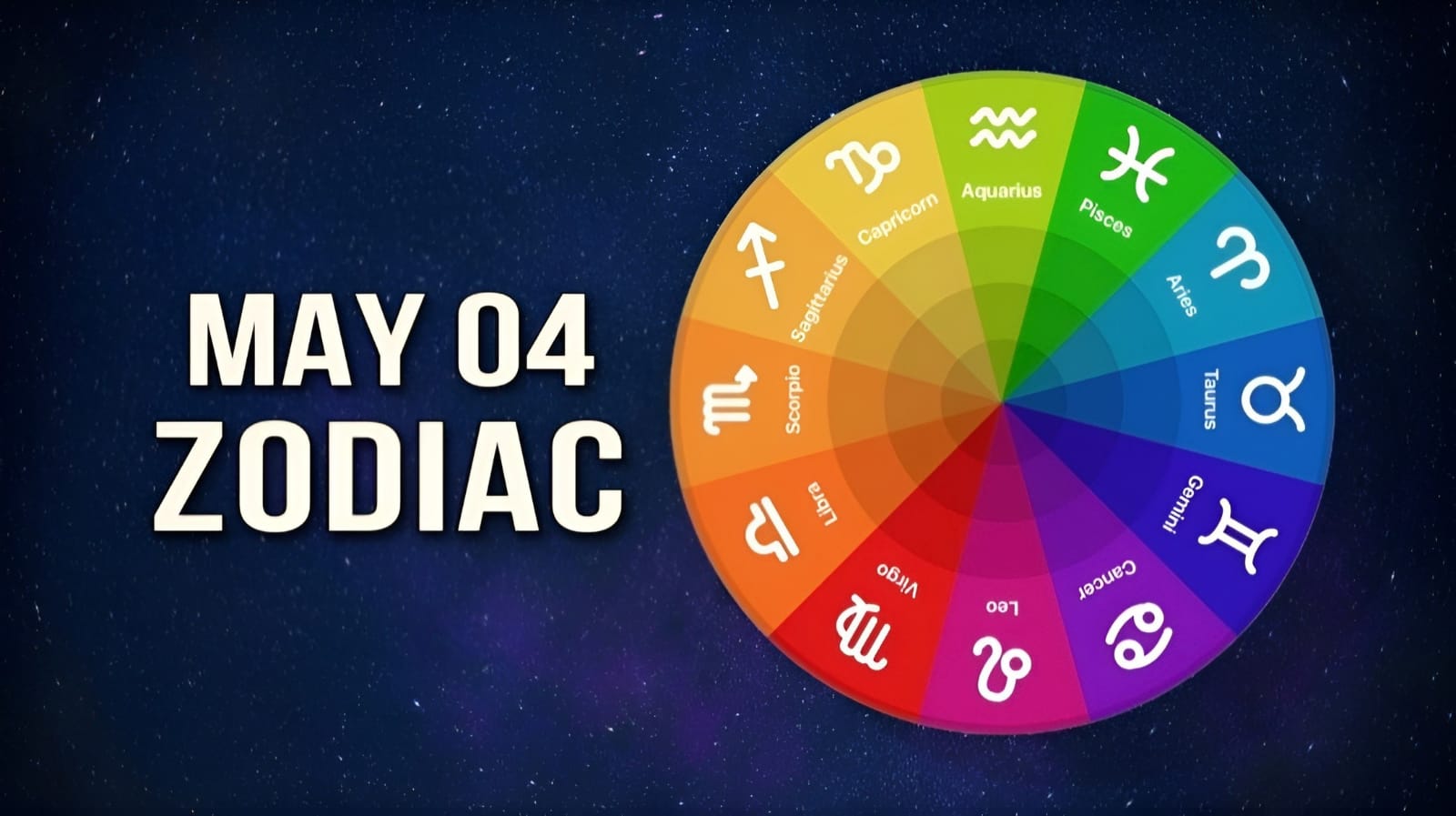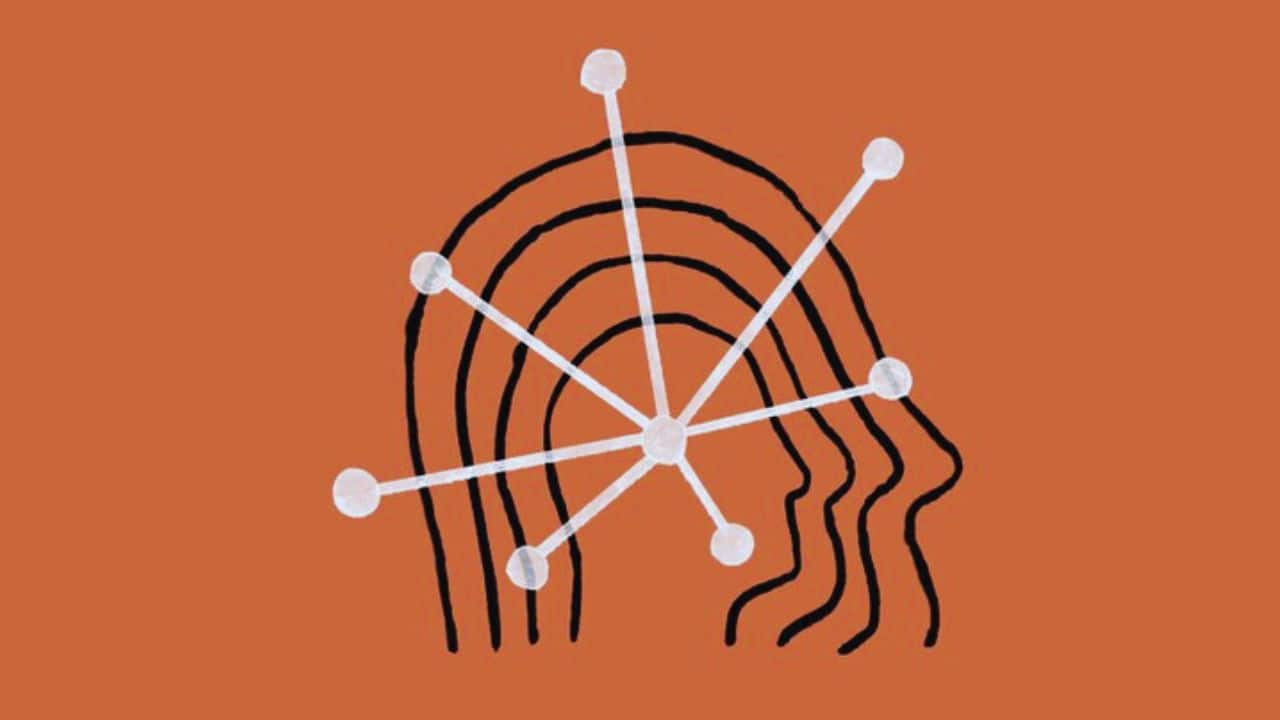Are you looking to know more about the Israel vs Palestine conflict history? This article will provide an overview of the conflict between Israel and Palestine, including its origin and recent developments up until 2023.
Knowing the historical background of this ongoing issue can help us better understand current events happening in that part of the world. Get ready as we dive deeper into this conflict, exploring all you need to know with updated information!
Content Highlights
- The ongoing conflict between Israel and Palestine has its roots in 19th & 20th-century Zionism and the Palestinian national movement.
- Intercommunal violence has been a recurring feature of the conflict since 1948, sparking a debate about territorial sovereignty that continues today.
- In 1993 provoked by historical grievances & ideology differences, The Oslo Accords provided for an attempt at peace.
- Recent actions, such as mutual recognition initiatives from governments involved, can move toward finding lasting peace amidst current instability.
Background and National Movements
In the 19th and 20th centuries, Zionism and Palestinian nationalism emerged as two conflicting national movements with clashing aspirations for sovereignty in present-day Israel.
History of Zionism and Palestinian Nationalism
Zionism is a Jewish nationalist movement originating in eastern and central Europe in the late 19th century, with the aim of creating a homeland for Jews. The Zionist movement sought to create a Jewish state in Palestine, which was then controlled by the Ottoman Empire.
This led to conflicts between Palestinian Arabs and Jews over land rights within Palestine as well as immigration into Palestine from various parts of Europe. Palestinian nationalism emerged after World War I when Palestine came under British control and began favoring Zionism.
As a reaction against this, Palestinians started organizing politically while launching campaigns to reclaim their right on equal footing with the Zionists for official recognition of Palestinian Arab self-determination.
British Mandate for Palestine
The British Mandate for Palestine was a post-World War (I) arrangement granted by the League of Nations in 1920 which vested Britain with temporary administrative authority over Palestine.
This mandate included a provision for the establishment of a Jewish national home to facilitate increased Jewish immigration to Palestine, which had begun several years prior and continued throughout the mandate period.
These large waves of immigration led to tensions between Jews and Muslim/Christian Arabs living in Palestine as they competed for land and resources. In 1947 under significant international pressure, the United Nations proposed partitioning some territories within mandatory Palestine for an independent Arab state alongside one designated as part of a “Jewish homeland”.
Intercommunal violence
Intercommunal violence between Israeli Jews and Palestinians has been a recurring, devastating feature of the conflict for many years. During British Mandatory rule, intercommunal clashes occurred as religious-nationalist tensions mounted over competing visions of the future of Palestine.
In 1929, violence broke out over a religious dispute at the Western Wall in Jerusalem, resulting in dozens of deaths and numerous injuries among both Jewish and Palestinian communities.
This was followed by further clashes throughout the 1930s – 1940s, such as during the Arab Revolt 1936/1939 — an anti-British revolt by Arabs with marked support from Palestinian nationalists— that resulted in hundreds killed on both sides. [Source: Jstor]
The 1948–49 War between Israel and surrounding Arab states also saw intercommunal strife flare up — culminating with massacres conducted by both parties, including attacking civilians purely due to their religion or nationality — causing thousands dead, of which many innocents were killed out of fear rather than strategic gain purposes.
Furthermore, this increased resentment led to multiple internal insurrections since then that have primarily targeted Israeli citizens but caused collateral damage across all three groups living there: Jews, Muslims & Christians alike.
Read More: Israel Adesanya Backs Ngannou to Upset Fury in Boxing Match
1948-49 War: Israel and the Arab States
During this period, declarations of Israeli statehood were followed by an Arab-Israeli War that resulted in the displacement of hundreds of thousands of Palestinians.
Creation of Israel and displacement of Palestinians
The creation of the state of Israel in 1948 and the resulting displacement of Palestinians became a prominent feature in the ongoing Israeli-Palestinian conflict. Following a United Nations resolution passed on November 29, 1947, tension between Jewish and Arab groups rose during this period.
This led to an outbreak of fighting between various forces, including those from Israel and Arab states. The war resulted in significant casualties, with thousands killed or injured on either side.
In addition to physical losses, approximately 700,000 Palestinian Arabs were displaced as part of Israel’s territory expansion after its declaration of independence. The effects of their displacement would be felt for years to come by both Israelis and Palestinians alike- sparking debate over territorial sovereignty that continues today.
Arab-Israeli War of 1948
The War of 1948, also known as the Arab-Israeli Conflict, began when Jewish forces residing in mandated Palestine declared independence for Israel on May 14th. With this announcement came immediate backlash from neighboring Arab states who sought to prevent its establishment owing to historical and ideological differences.
Following multiple attempts at diplomacy between the region’s newly formed nations and other powers, Palestinian guerillas launched attacks against Jewish settlements in the country, resulting in a full-scale war between the military establishments of Israel and four interrelated Arab countries; Egypt, Jordan, Syria, and Iraq.
Despite significant casualties on both sides of the battle lines, including the destruction of Palestinian society by displacement or death, Israeli forces were ultimately successful in their struggle for independence.
Palestinian Nakba (Catastrophe)
The Palestinian Nakba, also known as the Catastrophe, refers to the ethnic cleansing of Palestine that started in 1948 with the proclamation of Israel’s independence. Nearly 750,000 Palestinians were forced out of their homes and exiled from what is now Israel during a period we know as The Exodus.
This mass eviction rendered hundreds of villages and settlements uninhabited and decimated Palestinian families for generations, who now make up a quarter of all global refugees. Beyond those directly affected, widespread hardship ensued for Palestinians who remained within the new Israeli borders.
Since then, many efforts have been made to bring justice to victims and survivors, including campaigning both locally and in legal action at international forums like The Hague, but so far, little has been done concretely to compensate for suffering caused by this tragedy or recognize its scope historically.
1950-67: Continuing Conflict
In this period, tensions continued between Israel, the Arab states, and Palestinians as relationships between all involved parties experienced multiple wars and crises. Discover the full story to find out what else transpired before the present day.
Suez Crisis
In 1956, the Suez Canal was nationalized by Egyptian President Gamal Abdel Nasser on July 26th. This measure triggered the first major confrontation between Israel and Egypt in what is now known as the Suez Crisis.
After this event, Israel launched a surprise attack against Egypt on October 29th, which started a full-scale war that led to a ceasefire four weeks later. This crisis marked an important turning point for both sides affected by it: It gave Israel higher confidence in its military superiority, after completing a quick conquest over dozens of Arab villages and leading to the exodus of many inhabitants, but it also further redefined the Palestinian problem since displaced Palestinians were left without any solution for their situation.
As such, The Suez Crisis had sweeping implications over power dynamics and perceptions of each party involved and continues to be relevant to this day, with ascribed consequences still impacting the Israeli-Palestinian conflict in terms of politics, security, or control rights.
Six-Day War
The Six-Day War was an armed conflict fought between Israel and the Arab states of Egypt, Syria, and Jordan from June 5-10 in 1967. A preemptive air assault by Israel resulted in devastating losses for the Egyptian and Syrian armies.
This one-sided war concluded with a decisive victory for Israeli forces leading to complex changes in borders as well as the displacement of 750,000 Palestinians. The conflict markedly changed regional balances of power and had critical consequences on inter-Arab relations, triggering hostility between Arabs which resonates until today.
Yom Kippur War
The Yom Kippur War was launched by Egypt and Syria on the holiest day of the Jewish year, October 6th, 1973. This surprise attack brought Egypt and Syria into direct conflict with Israel, part of a larger coalition that included other Arab states.
The war would last 19 days in total while both sides clashed for control over disputed territory such as the Sinai Peninsula and Golan Heights. It ended after an agreement between Israeli Prime Minister Golda Meir and Egyptian President Anwar Sadat led to Israeli withdrawals from parts of these regions, providing some autonomy to their respective inhabitants but at the cost of significant casualties on either side.
In its wake, it had contributed to further tensions between Israel, Palestine, and surrounding Arab nations that persist to this day.
1993-2005: Attempts at Peace
In 1993, the Oslo Accords provided for mutual recognition between Israel and the Palestinians with an aim to reach a lasting peace treaty.
Oslo Accords
The signing of the Oslo Accords on 13 September 1993 is considered a landmark moment in the Israeli-Palestinian conflict. The Oslo Accords were signed between Israeli Prime Minister Yitzhak Rabin and PLO Negotiator Mahmoud Abbas in Washington, D.C., aiming to establish a peace process for the evaluation of the two state’s majority conflicting issues.
It had proposed that Palestinians gain autonomy and set up their own demilitarized government with their extended rights within major Palestinian lands from the Gaza Strip to Jerusalem, whereas Israel was given most of its security needs in return.
Initially, it faced some challenges when it came to implementation but still kept gaining traction among the international community as an attempt to bring peace between the two sides without further war or bloodshed.
Camp David Summit
The Camp David Summit was a key event in the Israeli-Palestinian conflict, taking place between 1993 to 2005. The primary purpose of this summit was to establish a peaceful resolution and end the long-running battle between Israel and Palestine.
As part of the process, several agreements were signed as part of an attempt at peace-building, including the Oslo Accords in 1993. However, despite these efforts, negotiations hit several road bumps and ultimately failed to reach their full potential due to disagreements over certain aspects, such as Jerusalem and the right of return for Palestinian refugees; tensions also increased significantly with the outbreak of the Second Intifada in 2000.
Despite not achieving success under its original goal of a comprehensive peace agreement, the significance of Camp David Summit still remains significant today within international diplomacy circles due to its multifaceted approach towards solution building rather than relying exclusively on military intervention.
Taba Summit
The Taba Summit was historic in terms of possible progress towards peace between Palestine and Israel. It took place from the 21 to 27 January 2001 in Taba, Sinai, and was between representatives from Israel and Palestine.
The aim of the summit was to find a resolution to one of the world’s most intractable conflicts, with roots going back hundreds of years to when Britain had set up a mandate trying for an equitable arrangement between Palestinians, Jews, and other minorities living there.
The hope at the time was that difficult issues such as borders, security arrangements, and refugees would be resolved within three weeks during the summit. Although no agreement emerged from this initiative due to disagreements on core issues, it may have opened key doors for future negotiations focused on furthering both sides’ legitimate interests in mutual benefit as well as defining how steps toward achieving these could lead towards lasting peace agreements.
Road Map for Peace
The Road Map for Peace was proposed in 2003 by the Quartet on the Middle East – made up of the United States, Russia, the United Nations, and the European Union. The plan aimed to resolve the Israeli-Palestinian conflict through a series of steps, including an end to hostilities, terrorism, and violence, as well as dismantling Israeli settlements in Palestinian areas.
It called for negotiations between Israel and Palestine, leading to a two-state solution with mutually agreed borders. Furthermore, it asked both sides to recognize each other’s right to exist within these secure boundaries within specified timelines, thereby establishing the mutual trust necessary for negotiating future peace treaties.
Finally, it outlined steps toward economic development, environmental protection, and international diplomatic support needed to make such a treaty possible.
Arab Peace Initiative
The Arab Peace Initiative, also known as the Saudi Initiative and Arab League Initiative, was first proposed by King Abdullah of Saudi Arabia in 2002. The plan put forward a comprehensive solution to resolve the conflict between Israelis and Palestinians, including creating an independent Palestinian state with East Jerusalem as its capital.
It also stipulated that the issue of Palestinian refugees should be solved in accordance with UN General Assembly Resolution 194, which acknowledges the right for them to return or receive compensation. The initiative was adopted in March 2002 by all states belonging to the Arab League, including Yemen, Syria, Lebanon, and Egypt, among others- offering Israel normalization of relations with all member states in exchange for a comprehensive peace agreement with Palestinians based on pre-1967 borders.
Reaffirmed multiple times since then by the league’s members, this initiative is still actively offered as a basis for negotiations between both parties, hoping to reach a lasting resolution to end decades of violent conflicts over granted territories initially promised by British Mandate for Palestine earlier 20th century onwards.
Present Status and Issues in Dispute
The current dispute between Israel and Palestine centers around the status of Jerusalem and holy sites, Palestinian refugees, Israeli security concerns, Palestinian violence over water resources, and the Occupation of the West Bank.
Jerusalem and holy sites
Jerusalem, which is held sacred by three major religions—Judaism, Christianity, and Islam—has been the focal point of many conflicts over its long history. Jerusalem’s holy sites are highly contested due to religious and cultural significance for Jews, Christians, and Muslims alike.
The city has an internationally agreed “status quo” agreement between Israel and Jordan that tries to manage access to Muslim and Christian places of worship in Jerusalem. Following the 1948 war with Jordan, Israel gained territorial control over East Jerusalem, which made a direct conflict for ownership of these holy sites.
Despite numerous attempts at resolution through negotiations, such as the Oslo Accords and Camp David Summit in the 1993–2005 period, Palestinian claim over this region continues to be unresolved, with disputes arising periodically over ownership and access rights to important holy sites like Al Aqsa Mosque/Temple Mount or Church of Holy Sepulchre among others.
Palestinian refugees
The Palestinian refugee issue has been an integral part of the Israel-Palestine conflict since its beginning. The displacement and dispossession of Palestinians have a long history rooted in Zionism, British Mandate policy, and intercommunal violence prior to 1948.
According to the definition used by the Palestine Liberation Organisation (PLO), Palestinian refugees are those who lost their homes between June 1, 1946, and May 15, 1948, “as a result of hostilities or on account of racial, religious or other discrimination” during this period (United Nations Relief & Works Agency).
This affected more than 750,000 individuals in total, who were forced into refugee camps throughout Lebanon, Gaza Strip, and Jordan, among others, as they were no longer allowed back to their homeland.
To add to this complexity, Israelis from Ukraine also received refuge through the Israeli Legalization Law, which was passed post-World War II allowing Jewish Ukrainians to search for asylum.
These dynamics set out by both countries regarding foreign citizenship had deep repercussions concerning the indigeneity and national identity amongst these two nations ensuring that even up until today, regular clashes take place due to contemporary arguments over territory along with PTSD not being able to be erased, considering war crimes committed by both sides clash further exacerbating issues year after year.
Also Read: Israel Declares State of War as Death Toll Passes 600 in Hamas Clashes
Israeli security concerns
Israel is justifiably concerned about its safety due to the repeated attacks from Hamas militants and other armed groups. In 2020, a deadly attack triggered by Hamas forces exposed intelligence gaps in Israeli security forces.
The subsequent abduction of Israelis during the same period raised further alarms leading to rigorous patrolling and surveillance measures being taken at borders. Movement restrictions in the region are driven not only by a desire for peace but also by legitimate security considerations which need immediate attention.
Israeli Prime Minister Benyamin Netanyahu has called on Palestinians overseen by Hamas to abandon Gaza while vowing to ‘destroy’ militant infrastructure such as weapons tunnels used for infiltrations into Israeli territory.
Palestinian violence
Since the early 20th Century, Palestinians have resisted Israel’s occupation of their ancestral lands through civil disobedience and armed resistance. Through years of frustration with a lack of meaningful progress in peace negotiations, Palestinian groups such as Fatah, Hamas, and Islamic Jihad have resorted to using attacks against civilians as a means to express dissent.
Palestinian militant groups also pose threats to Israeli settlements by launching rockets from Gaza or infiltrating across border fences into Israel proper. These attacks trigger temporary escalations in tensions between Israel and Palestine that often lead to retaliatory strikes on Palestinian targets from the Israeli military.
Protests are another form of violence used by Palestinians, ranging from peaceful marches or demonstrations against the occupation, which could potentially become confrontational and violent due to clashes with settlers or excessive use of force by Israeli security forces.
In October 2022 alone, 30 Palestinians lost their lives during protests over crippling economic conditions caused by restrictions imposed upon them mainly due to loss of access movements throughout East Jerusalem/ West Bank, for instance, specifically Rachel Tomb near Bethlehem, where generationally live Christians Bedouins Face difficulty not only economic but religious as well.
Water resources
In Israel and Palestine, water access is increasingly being used as a tool of control. The region shares three main water sources: the Jordan River basin, the Coastal Aquifer, and the Mountain Aquifer.
Unfortunately, due to geographic positioning that puts Israel in an upstream sticking point with regard to control over reservoirs on the Jordanian side of the border – along with rules imposed by international agreements stemming from its occupation of East Jerusalem and parts of the West Bank – Palestinians have been systematically denied fair access to clean drinking water resources.
This has resulted in severe shortages throughout Palestinian territories while Israelis enjoy plentiful supplies of residential supply and modern irrigation systems. Israeli control over Gaza’s coastal aquifer further exacerbates water insecurity for Palestinians living there; it has been contaminated through years of misuse caused by costly restrictions put in place by Tel Aviv, which prohibit development or improvement outside what was agreed to under Oslo peace accords in 1993.
Occupation of the West Bank
Since 1967, the West Bank has been occupied by Israel. The area was captured from Jordan during the Arab-Israeli War of that year and is viewed by Palestinians as part of their future statehood and an illegal occupation on behalf of the Israelis.
To cement this control, various Israeli settlements have since been established in these regions, which are seen as violating international law according to many countries around the world.
These developments caught global attention because they have become a major point of tension between Israel and Palestine while peace negotiations were being carried out over several decades in an attempt to find common ground on containing conflict within the region.
Recent Updates on the Israel-Palestine Conflict
In October 2023, Hamas clashed with Israeli forces on the Gaza border as part of ongoing tensions in Israel and Palestine.
Israeli forces clash with Hamas on October 2023
On October 2023, Israeli forces clashed with Hamas gunmen, resulting in at least 1100 people killed and 2,500 more wounded. Netanyahu declared that the country was “at war” after this attack from Hamas. [Source: CNN]
The clash occurred alongside other violence related to the ongoing Israel-Palestine conflict, such as 700 attacks against Palestinians by Israelis in the same year. Netanyahu vowed to make sure that his government would exact an “immense price from the enemy” and promised “mighty vengeance” for the attack from Hamas – a sign of what he deemed their willingness to push for sustained hostility instead of engaging actively towards peace talks with Palestine.
Gaza blockade
The Gaza Strip has been under a blockade by Israel and Egypt since 2007. This has limited the movement of people and goods to, from, and within the Palestinian territory as well as preventing access to vital resources such as food, fuel, and medicine.
In particular, access to healthcare is severely restricted due to restrictions on imports for medical purposes or even patients seeking treatment outside of Gaza. The Egyptian-controlled Rafah crossing is often closed or, at times, can be open only one way, precluding Palestinians’ right to freedom of movement.
This blockade has been heavily criticized by human rights organizations who have vehemently condemned its impacts on Gazans, who continue to face an inadequate economic situation alongside ongoing effects caused by conflict in the region.
Agriculture and the West Bank barrier
The West Bank barrier has had a major and debilitating effect on agricultural activities in the region, particularly for Palestinian farmers. The wall restricts access to vital agricultural lands, making it increasingly difficult for them to cultivate their crops.
Furthermore, transporting their produce is hindered as the movement of goods and services between the West Bank and Gaza Strip is heavily restricted by the barrier. Palestinians’ access to markets has been limited due to this increased security measure resulting in food insecurity becoming an ever-growing crisis situation amongst those living on agricultural land.
Dependency upon Israeli products has also become more prominent as cultivating reliable resources from within Palestine is made near impossible due to restrictions imposed via permit requirements when crossing into Israel proper.
Boycotts and protests
Boycotts and protests, both peaceful and more militant in nature, have become a staple of the Israel/Palestine conflict. Palestinians, particularly since 2000, have employed tactics such as calling for boycotts on Israeli goods or advocating divestment in Israeli companies to show their disapproval of the occupation.
In 2020, thousands of Palestinian citizens protested after Israel’s controversial decision to annex parts of the West Bank, demonstrating popular rejection of these policies.
There has also been a significant outcry against government actions, with non-violent civil disobedience seen in large-scale labor strikes and civil unrest throughout the region. Of course, there were also instances where violence was used, sparking further political tensions between communities leading security forces to lock down areas for safety reasons.
Actions Toward Stabilizing the Conflict
Strategies such as mutual recognition initiatives, government involvement, societal attitudes, and the formation of a Palestinian army have been established in order to bring stability to the conflict.
Mutual recognition initiatives
Mutual recognition initiatives are diplomatic efforts by the international community to seek a resolution to the Israeli-Palestinian conflict. These initiatives aim to promote dialogue and negotiations between Israel and Palestine, promoting understanding of each other’s needs which will ultimately lead towards mutual recognition of both parties.
The primary objective is for Palestinian self-governance in the West Bank and Gaza, and an Israeli-Palestinian peace agreement that would finally bring an end to decades of unrest in the region.
Mutual recognition has also been supported by groups such as UN Resolution 181, known as the “Partition Plan,” which supports Palestinians’ right to self-determination with their own internationally recognized state and proposes two states living side by side in peace with secure borders alongside respecting human rights standards for both nations.
Most notably, these initiatives have been at work through organizations like US Middle East Peace Envoy Avi Berkowitz, who met privately with leaders from Hamas prior 2020s leading up till now, resulting in a cease-fire on October 2023 following days of increased tensions along the Gaza Strip.
Government involvement
Government involvement has been a key factor in the conflict between Israel and Palestine. The Oslo Accords, signed by both parties in 1993, resulted from coordinated efforts of many countries, including Norway and the United States, to create an interim agreement that enabled Palestinian autonomy over parts of the West Bank and Gaza Strip while guaranteeing Israeli security interests.
The Accords created hope for peace, but stalemates have occurred during implementation phases due to polarizing positions taken by the governments involved.
The role of the US remains particularly important due to its historic relationship with Israel as well as regional influence. In particular, US diplomatic initiatives such as President Clinton’s 2000 Camp David Summit attempted to bring two sides closer together but ultimately ended without success largely because neither party was willing to compromise on core issues at issue like Jerusalem or refugees rights.
More recently, in 2021, the Biden Administration is helping facilitate talks around a ceasefire after months of hostilities between Hamas and Israel while promoting measures designed to improve life for Palestinians living under occupation, such as humanitarian aid packages providing access to clean water and electricity infrastructure repairs.
Palestinian army
The Palestinian army is a term used to refer to the combined, organized military forces of Palestine. It was formed in 1965 following growing tensions between the Palestinians and Israel shortly after Israeli independence was declared in 1948.
The primary role of this force is to promote national defense, as well as protect Palestinian civilians from outside threats, including acts of violence by Israelis or other hostile states or organizations.
It has been active in several major conflicts, such as the 1973 Yom Kippur War and, more recently, during Operation Cast Lead against Israeli attacks on Gaza in 2008-2009 (from 27 December to 18 January). With limited resources and personnel, it has still managed to become an important part of any possible solution for a peaceful settlement between Israel and Palestine due to its influence over both state security matters and public opinion among Palestinians.
Fatalities and criticism of casualty statistics
The Israel-Palestine conflict has resulted in hundreds of civilian fatalities on both sides since 1947. In 2020, 595 Palestinians and 35 Israelis were killed, while in 2021, 238 Palestinians and 4 Israelis were killed. Here, is a table showing the estimated total civilian deaths from Israel and Palestine during the 2000-2023 conflicts.
| Year | Israeli deaths | Palestinian deaths | Total civilian deaths |
| 2000 | 20 | 95 | 115 |
| 2001 | 36 | 525 | 561 |
| 2002 | 56 | 2239 | 2295 |
| 2003 | 26 | 534 | 560 |
| 2004 | 40 | 519 | 559 |
| 2005 | 13 | 773 | 786 |
| 2006 | 16 | 1504 | 1520 |
| 2007 | 3 | 471 | 474 |
| 2008 | 19 | 449 | 468 |
| 2009 | 3 | 1370 | 1373 |
| 2010 | 3 | 54 | 57 |
| 2011 | 3 | 38 | 41 |
| 2012 | 4 | 23 | 27 |
| 2013 | 4 | 20 | 24 |
| 2014 | 7 | 2205 | 2212 |
| 2015 | 4 | 813 | 817 |
| 2016 | 4 | 88 | 92 |
| 2017 | 9 | 50 | 59 |
| 2018 | 1 | 262 | 263 |
| 2019 | 1 | 29 | 30 |
| 2020 | 1 | 29 | 30 |
| 2021 | 14 | 277 | 291 |
| 2022 | 2 | 22 | 24 |
| 2023 | 12 | 240 | 252 |
Table: The Number of Civilian Deaths in the Israel-Palestine Conflict (2000-2023)
However, there have been numerous criticisms of casualty figures due to discrepancies between or within organizations conducting the reports of deaths. This lack of accuracy makes it difficult for people to know the complete death toll resulting from the conflict as well as its human cost.
Additionally, this discrepancy impacts efforts to stabilize the conflict by raising questions about public perception and how citizens can trust statistics reported by governments or international aid organizations.
Future Outlook
With a variety of initiatives in the works and some seemingly positive outcomes toward stable separation between the two countries, it is imperative to stay up to date on political developments that are increasingly affecting this region.
| Policy or Step | Description |
| Oslo Accords | A series of agreements signed by Israel and the PLO in the early 1990s aimed at establishing a two-state solution to the conflict. |
| Road Map for Peace | A peace plan developed by the US, Russia, the EU, and the UN in 2002 called for a 3 phased process that would lead to the establishment of an independent Palestinian state by 2005. |
| Arab Peace Plan | A peace plan proposed by the Arab League in 2002 called for Israel to withdraw from all occupied territories and for the establishment of a Palestinian state with East Jerusalem as its capital. |
| Ceasefires | Numerous ceasefires have been negotiated between Israel and Palestine over the years, but they have often been broken. |
| 2 State Solution | The most widely accepted solution to the conflict would involve the establishment of an independent Palestinian state existing alongside Israel. |
| International Aid | The international community has provided billions of dollars in aid to the Palestinians in an effort to improve their economic conditions and reduce their reliance on Israel. |
| Sanctions | The international community has also imposed sanctions on Israel in an effort to pressure it to change its policies. |
| Diplomatic Pressure | The international community has also engaged in diplomatic pressure on both Israel and Palestine in an effort to bring them to the negotiating table. |
Table: Policies/Steps Taken So Far to Stop the Israel-Palestine Conflicts
Prospects for peace
Although the prospects for peace between Israel and Palestine are uncertain, both sides have expressed an interest in finding a diplomatic solution to end more than seven decades of conflict.
Despite continued tension between the two countries, roughly half of Israelis and Palestinians believe that a peaceful resolution through talks is possible. However, several issues threaten to make a resolution difficult; these include Jerusalem and its holy sites, Palestinian refugees’ claims for resettlement and restitution, and security concerns among Israelis regarding Hamas and other extremist groups in Gaza.
Violence committed by militant Palestinians against Israeli civilians or military personnel, divergent views on water rights within shared aquifers that feed into River Jordan from Israel’s Kinneret Sea in northern parts of the country’s region as well recent events such as Israeli forces clashing with Hamas on October 2023.
The differences between the two sides have caused much public animosity preventing trust-building initiatives necessary for any meaningful dialogue. As such it remains unclear if either side will be able to bridge those gaps moving forwards in order to achieve lasting peace and stability.
Challenges and potential solutions
The Israel-Palestine conflict remains one of the most intractable crises of our time. Despite passionate efforts from regional players, international organizations, and the UN to bring about negotiations toward a two-state solution, many years of frustrated dialogue have brought only limited progress.
In terms of potential solutions, much attention is paid to mutual recognition initiatives that could provide both sides with an opportunity for meaningful dialogue. Additionally, international involvement in crisis management has been greatly increased in recent years.
Governments have played an essential role as mediators between both parties in order to find common ground on issues such as security and holy sites. However, there also needs to be social change within Palestinian society in order for any agreement or peace process to hold water; this includes addressing poverty levels and equal civil rights across community lines within Palestine itself before talks can make real progress outside its borders with Israel.










































